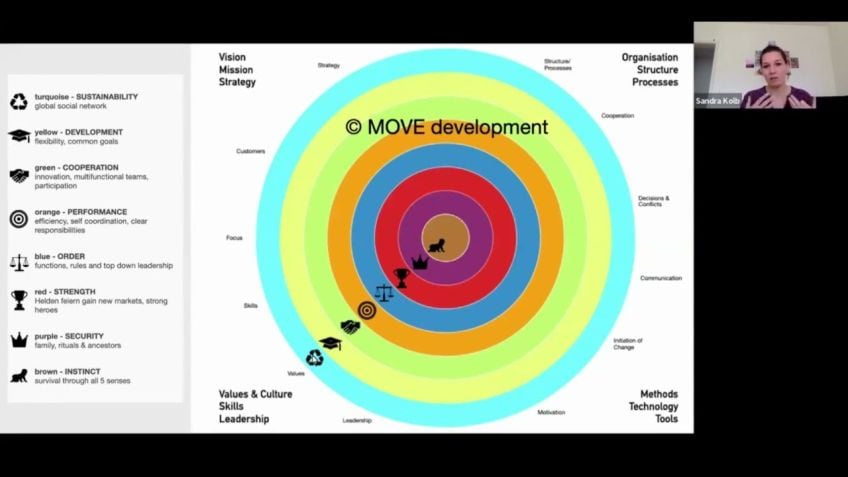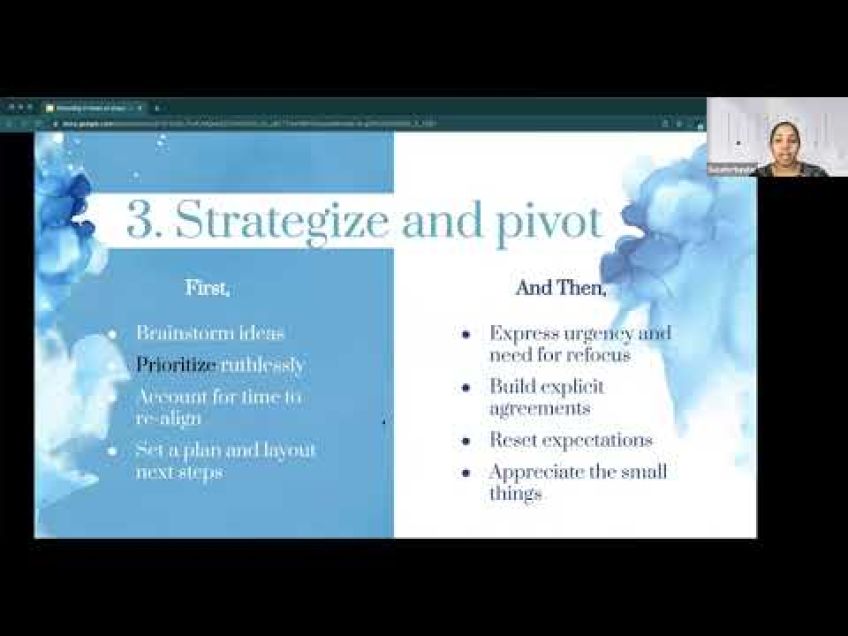Building Resilience in a Changing Environment by Jennifer Bryan
Understanding the Complexity of Change
Welcome! No matter where you are in the world, our topic for discussion today revolves around navigating change: why it's complicated and how you can best lead it. Have you ever asked a question and received silence in return? As strange as it might seem, a non-answer can reveal much more than a verbal response. When leading change, such responses can be even more significant. I've spent over 20 years in leading change and have assisted nearly 40 different organizations. My experience has taught me that change isn't about rocket science, but about people. That’s the clear but double-edged fact.
Change and Its Relationship with People
Boldly stated, change isn't necessarily simple, but oftentimes we make it more complicated than it needs to be. The unpredictable and individual nature of how people react to change just adds an extra layer of complexity. Businesses typically focus on tasks, project plans, and training plans, leaving out an important consideration: the impact of change on people.
Case in point; I was once brought in to assist an organization with a digital transformation program. After nine months of work, during a strategy session, I asked a simple question: "Why should I care?" The management team responded with effusive talks of efficiencies and effectiveness. But the real takeaway from the interaction was their realization of a crucial aspect – they hadn't communicated the "So what" to their people.
In other words, they hadn’t made it clear as to why people should adapt to the new processes, tools, and systems they were implementing. This missing element acted as a roadblock in their path of transformation.
The Shift in Management Style
There’s a critical shift in expectations in our digital, informational age, particularly post-pandemic. Workplaces are evolving at a rapid pace. The management style that was expected during the industrial age - a directive style - is no longer viable. Today, a vast majority of people are rethinking their work arrangements. They are deciding not just where they want to work, but also how they want to work.
These changes have led to what is now being called the "great resignation." A report from McKenzie projects an alarming forecast – by 2027, 75% of the organizations currently listed on the SNP will cease to exist. This startling statistic underscores the urgency for organizations to adapt and change. Leaders must navigate this uncertain and complex time, supporting people through the transition and confidently leading the change.
Addressing Fears about Change
Many leaders mistakenly think that people dislike change. However, in my observation, people do not dislike change - they dislike being changed without their involvement. The key to effective change management lies in getting people on board in the right way.
To this point, I recall an instance working for another organization, moving from an unsightly old building to a brand-new, modern space. Despite this positive transition, people were disgruntled. Why? Because they weren't included in a significant decision - there would not be assigned desks in the new office, and there wouldn’t be enough desks for everyone.
(This experience echoes a common issue in change management. People aren't always resistant to the change itself; instead, they may be resistant to the manner in which the change is implemented.)
Leading Change Requires a Shared Journey
Leading change isn't a solo act but a shared journey or, more aptly, a story. The question leaders need to ask is: "What story do you want to share, and how do you want to travel?" A successful journey requires everyone to be moving side by side and in the same direction. In order to build resilience and effectively lead change, there are three factors that leaders should consider:
- Vision: One must envision the future, not just the present, but a decade ahead. Figure out how your clients, staff and yourself would like to perceive the organization.
- A Holistic Approach: Utilize a holistic approach to understand the internal and external political dynamics, economic fluctuations, social norms etc., that could potentially impact the change.
- Empathy: Consider the person farthest from the decision-making room. Understand their perspective on the change to ensure that their initial encounter with the change is positive. This can largely affect how smoothly the change process proceeds.
At its core, change is about people, not rocket science. Armed with these three considerations and a people-centric perspective, leaders can effectively navigate uncertainty and complexity, thriving through change rather than merely surviving.
Case in Point: Addressing Technophobia During a Digital Transformation
In another organization undergoing digital transformation, I noticed an intriguing hurdle – employees being afraid to even touch the new equipment brought in, indicating a technophobia. To address this, I employed an 'end person in mind approach'. We arranged for the new equipment to be placed at the helpdesk, allowing employees to gradually familiarize themselves with it. Over time, the initial resistance waned, and the employees were more open to adopting the new technology.
Summary
Successfully leading change requires a clear vision for the long-term future, a holistic approach to understanding the various dynamics that can impact the change, and empathetic consideration of every single person affected by the change. The most important takeaway of the day: Remember that change is about people, not rocket science.
Thank you for your time! Feel free to reach out to me with any further questions. Don't forget to check out my book for more insights! Looking forward to connecting with you soon.
Video Transcription
Good afternoon or good morning or good evening. Wherever you may be in the world, silence is loud. Have you guys ever asked someone a question? And they've not answered you?Not because they haven't heard you or because they haven't seen the question, the response they are giving you speaks volumes when you are leading change. And if it's one thing I've learned working in over 20 years in the leading change space and helping nearly 40 different organizations is that change is about people, not rocket science. Now, that's a little bit of a double edged sword. It's not to say that change is simple. It's just that sometimes we make it a bit more complicated than it needs to be. It's also not to say that people are simple because we all know that A plus B does not necessarily equal C when it comes to people, businesses tend to focus on the tasks, the project plans, the communication training plans, the things that need to get done rather than on the actual, leading the people and the impact it's going to have on people.
I was working for an organization and I was brought in for digital transformation program and help them with that. And this program had at that point been operating for nine months and I'm sitting in their strategy session and they're talking about the things of what went well, what didn't go so well, what they do, what they're gonna do next year, that kind of thing. I said, you know, this all sounds great guys. But why should I care? And they stopped and they looked at me and they said, well, because of efficiencies and effectiveness and blah, blah, blah, basically giving me what I would call the management spiel and I said that all again, sounds great. But so what, and that's when the penny really dropped for them, they realized they hadn't communicated that. So what to the person, what's going on for them and hence why they should be adapting these new processes and tools and systems that they were actually putting in place.
Now, back in the industrial age, it used to be that it was really imperative to use a more directive style of management and leadership and it was actually expected. But in today's digital informational age expectations are enormously different, especially now post pandemic, a load of people are looking at what do they want, how do they want it? Where do they want to work? How do they want to work? And that's hence the great resignation and that's just the tip of the iceberg. There's a mckenzie report that states that back in 1958 there was the lifespan of a typical organization on the SNP was 60 years. Now, that's 12 years. It also states that in 2027 75% of the organizations that are currently listed on the SNP will no longer exist. Now, that's a startling statistic in my book because that means organizations need to adapt and change or they're going to die. So it can feel really quite bewildering to be leading change in this time of great uncertainty and complexity. It can also feel really daunting to have to feel you've got to support and help people along the journey of change and have the confidence to lead them in that change.
And as a result, there's a lot of leaders that think people don't like change, but I would say it's that people don't like being changed. Now, I was working for a different organization and I was actually an employee of this organization and we were in a grungy, dirty, very old, not very nice uh building. And we were moving to this brand new, shiny, gorgeous building, new furnishings, loads of light everywhere, really, really lovely space. And as we're packing up our stuff and putting in the boxes for the move, literally two weeks before we moved, we suddenly get the notification that we will not have a assigned desk in this new space. And not only that there won't be enough desks for everybody in the team. Now, I can tell you because people weren't brought along that change. We're just suddenly told this is what's gonna happen literally two weeks before we're going to actually make the change for three years.
People were complaining even though we were in a beautiful new building, we had cafeterias, cafes, lots of collaboration and informal meeting zones. All the gizmos that you would expect really in a modern office now. But because people weren't brought along, they continued to complain.
Most of us have heard the analogy that change is a story or a journey. The question I would pose is what story do you want to share? And how do you want to travel? And I use the word share very specifically because change is not a one man band activity. Also. How do you want to travel? Do you want to travel with everyone next to you? And as you all go down the path together or do you want to be about 20 yards ahead and using your energy to keep everybody moving along with you and trying to give him that impetus to keep along on the journey? There are three factors you need to take into consideration when it comes to delivering resilience and building that resilience and delivering the change and leading the change. The first one is about vision and it's not just about the here and now I would argue that it's very important to really look at 10 years down the line. And when you're thinking the vision, you need to think about what is it that we want and how do we want it? What do we want our clients to think about, feel about, perceive us as, what do we want our staff to think, feel and perceive us as?
How do they want to think about us as an organization? Secondly, it's about utilizing the holistic approach to change that gives us an outside in and an inside out perspective on what it is that we are trying to achieve because we need to take into consideration the different political dynamics internally and externally, we also need to look at the economic fluctuations, the different social norms that are going on.
Do we have the right systems, processes, teams in place all of these different elements. What is it about these elements that may help or hinder us in the change? Because that will help us build out the change and understand the impacts that that will have on the people. And with that followed by the A B change model will give us the flexibility in our leadership styles to actually make it work during this level of uncertainty. And finally, it's about the in person in mind. And what I mean by that, it's about thinking of the person who's the furthest away from the project and the decision making room. What are they thinking? What are they feeling? How are they perceiving potentially the change when they first hear about when they first think about it, when they first discover it learn, it gets announced to them, they get told it's in the gossip, whatever that may be. If you can make that moment for them positive, then there is a high probability that everybody in between will have a positive initial moment with that change and that helps you with the first hurdle of change. Now, all of these three different areas really gives leaders the flexibility to deal with the uncertainty and the complexity and which is indicative of today.
And it allows us to not just focus on the actual plan of change, those things that need to get done, but it allows us to plan in a way in which we are able to thrive as an organization rather than just survive. Well, when I was working for a another organization, it was another digital transformation. It was quite a, a large organization and long story short, they, they were doing several pilots and where people got completely new equipment and new software and, and all of all the gizmos that people really expect if they were to go into a a uh technology store and get that today um and put it into their homes.
But when, what they discovered is that when they had those pilot sessions, a load of people actually were scared to turn the machine on to touch the machine in its entirety. Now, they knew people had a fear of technology. There was a lot of that in the organization. But when we're observing that and I was observing this in these pilot sessions and started to realize it's not just a fear of technology people had, but a phobia of technology. And that's a completely different kettle of fish. So I had to think. Ok, so what would that mean? What does that, what does that feel like? And then I thought, uh, I have a phobia. I won't go into all the nooks and crannies, but I have a phobia of rats. And so I started to think, all right, that the client had this beautiful uh building. It was about a literally a block long and uh, where I worked with the team is down at one end and there was a meeting room and all the meeting rooms and the quiet rooms and the small meeting rooms all were um glass walls and so forth. And I started to think if there was a rat in that meeting room, there is no way I'd be in that building much less down there working with the team.
And so I started to think what would it take for me to finally get comfortable to go and sit in the area that I normally do within my client base. Long story short, a lot of time. And that's what I started to realize these individuals needed when it came to the technology, phobia. They needed time to get used to the actual technology. So, sorry, I think, ok, how could we make that work? And I realized when I was working with a client that they have actually an, it help desk at all the offices and even if they aren't, um, there isn't someone there every day of the week because there are some that were really quite small satellite offices. There was at least someone there part time in the week for two of the days or three of the days and so on and so forth. And I thought right, great. Could, let's get the equipment, all the brand new equipment with a dummy, uh, system video p you know, profile set up onto it and have that at each of their desks. And if their desk isn't in a high traffic zone area, move them to a high traffic zone area.
And so that way when people were coming in and out and getting their cups of tea or whatever, it may be, they would see the, the new equipment over there and they'd be like, oh, gosh, what is that? I don't, I'm gonna just go this way, but eventually they might even say, hey, Joe, what's that thing on your desk? Oh, it's the new equipment you want to see it? No, no, that's ok. That's all right. I'm just gonna, just wanted to know. Thank you very much. Anyway, long story short over time. They would start to get a little bit more curious, a little bit closer to the equipment to the point they might want to start to try and test it, have a play with it, watch people do with it so that by the time the equipment was then delivered for them, and they had to start using this new, this new device and learning how to use it properly in the actual pilot and, and release sessions, it was an alien to them.
And as a result, they are able to take it on board and adopt the new ways of working, which was a real issue prior to that. So to recap the three things, you need to really take into consideration when it comes to building resilience and change is first of all, having a vision, a vision that is very much in 10 years time thinking about how do you want people to feel? How do you want people to think? How do you want people to perceive you, your staff, your clients yourself, your friends, what is it that you want then utilize the holistic approach to change that gives you that inside out, outside in perspective, followed by the A B change model that then builds that flexibility into your plans and into your approach in delivery mechanisms for the change.
And then finally having that end person in mind approach. So you understand, where are they coming from? What's going on for them? And what is happening for them. He after all change is about people not rocket science. So thank you very much guys. I really appreciate you coming along and listening. I'm going to take a look at some questions here. I have a dual screen going on. These are all my contacts though. So if you want to reach out to me after the event or please feel free to do so. Um No worries. Also, I'll be hanging around in the event so you can come and meet me in the networking sessions or just send me a little message, no problems at all. So, thank you very much. Also, if you want to purchase my book, you um you can do so at all depending on where you are in the world at all of these different retail outlets online. So I'm just going to see if there's any questions. Thank you very much guys, really appreciate it. Um Ronnie, I see that you weren't able to hear. So I hope that got rectified but it looks like others could. So I hope that all got sorted any other questions? No, it doesn't look like it. Well, thank you very much guys, really appreciate it and uh I look forward to chatting with you sometime soon. Thank you very much. All right, have a good one.





